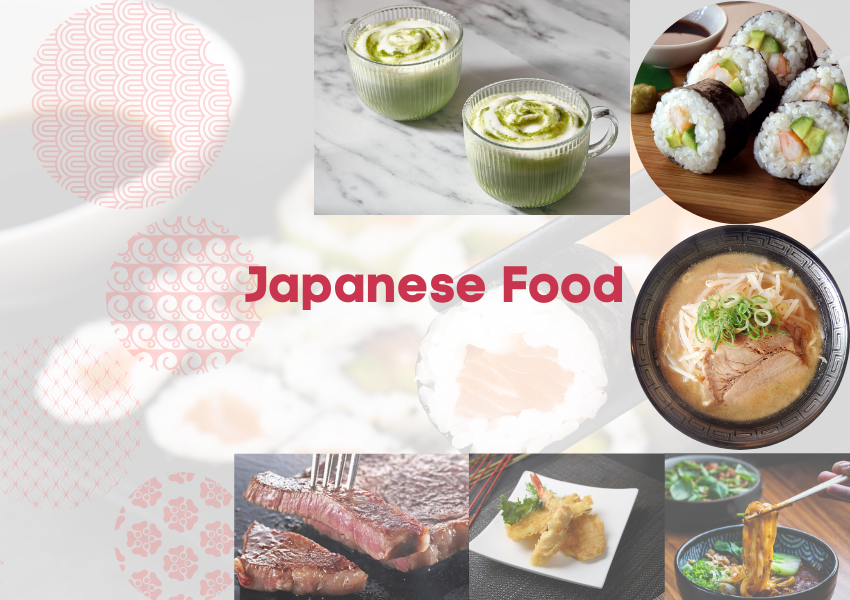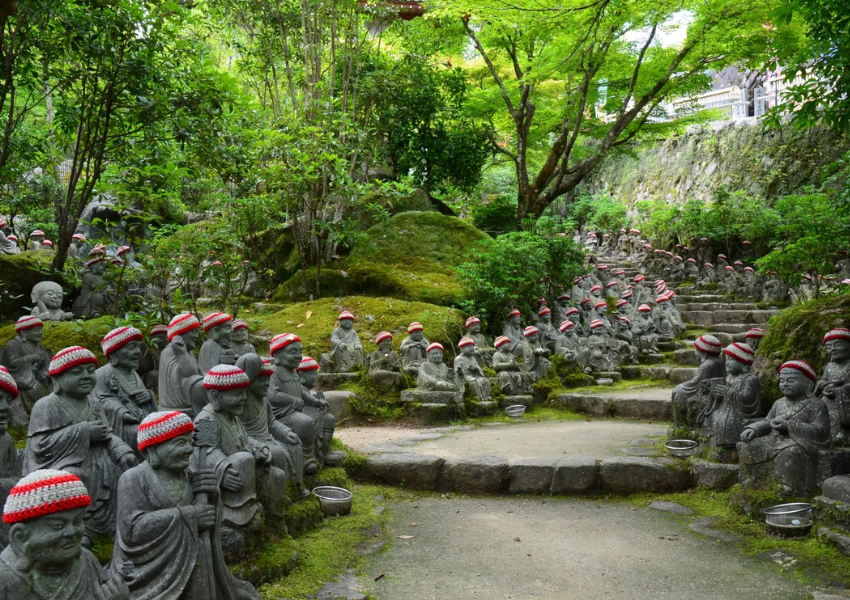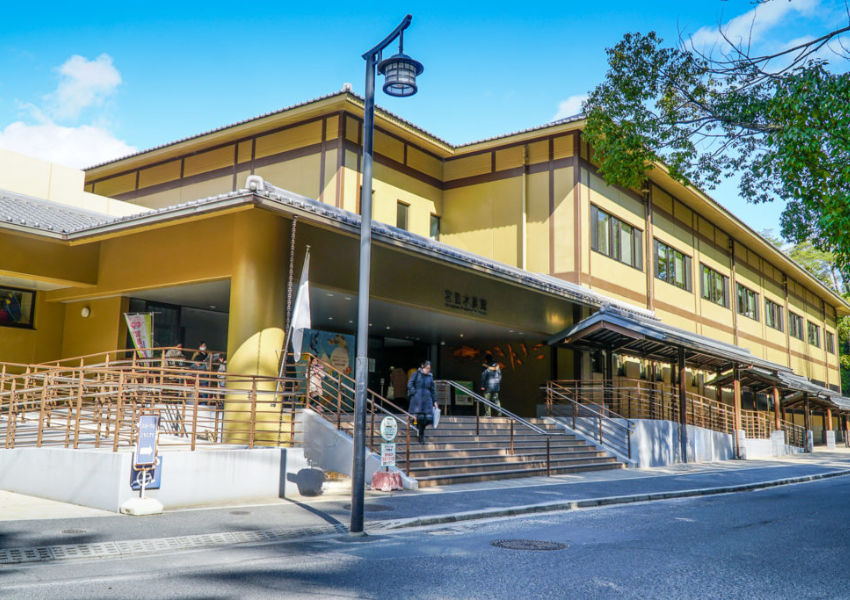Japan is a country known for its rich culture, stunning landscapes, and delicious food. From sushi to ramen, there are countless dishes that have become popular all over the world. But nothing beats trying these dishes in their place of origin – Japan. With so many options to choose from, it can be overwhelming to decide what to eat in Japan. That’s why we have compiled a list of the 15 best Japanese food you must try during your visit. So get ready to tantalize your taste buds and embark on a culinary journey through Japan.
Table of Contents
ToggleHow To Make The Most Out of Japanese Food Culinary Experience.
When it comes to trying new foods, it’s important to keep an open mind and be willing to step out of your comfort zone. Japanese cuisine may seem unfamiliar to some, but don’t let that stop you from trying these delicious dishes. Here are some tips on how to make the most out of your culinary experience in Japan:
Be Adventurous
Japanese cuisine is diverse and offers a wide range of flavors and textures. Don’t be afraid to try something new and different. You never know, you might discover a new favorite dish.
Embrace the Culture
Food is an integral part of Japanese culture, and it’s important to respect their customs and traditions. For example, when eating sushi, use chopsticks or lift it between your middle finger and thumb. Also, avoid mixing wasabi into your soy sauce as the chef has already added the right amount to the sushi.
Explore Different Places
While you can find most of these dishes in any restaurant, it’s always a good idea to explore different places and try local specialties. From street vendors to department store basements, there are endless options to satisfy your cravings.
Now that you know how to make the most out of your dining experience, let’s dive into Japanese foods.
Sushi
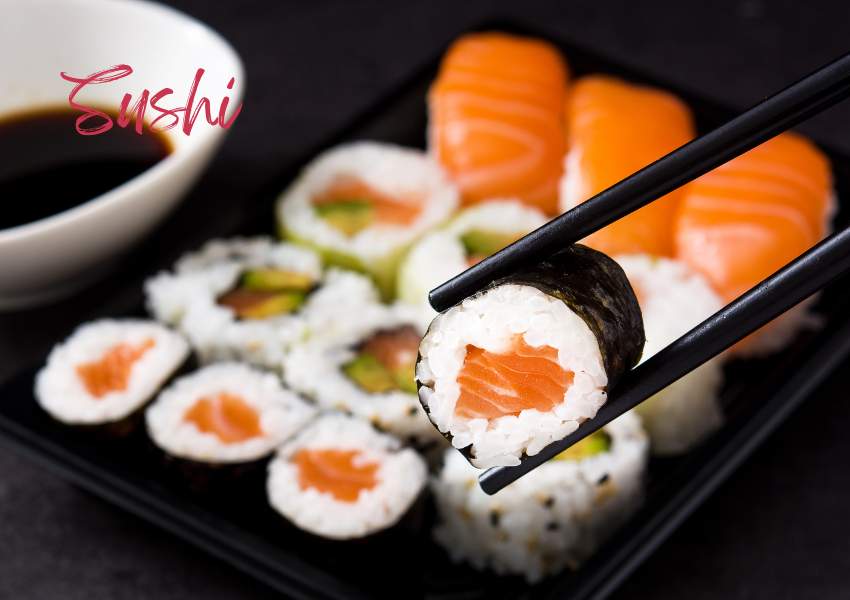
No list of Japanese food would be complete without sushi. This iconic dish has gained popularity all over the world, but nothing beats trying it in Japan. Contrary to popular belief, sushi doesn’t always contain raw fish. It refers to any dish made with sushi rice seasoned with vinegar. You can find a variety of fillings such as seafood, vegetables, and even egg. The most traditional way to eat sushi is to use chopsticks or your fingers and dip it lightly in soy sauce mix wasabi, and pickled ginger before taking a bite.
Where to Find It: Sushi is widely available in Japan, from high-end restaurants to convenience stores. For an authentic experience, head to Tsukiji Fish Market in Tokyo, where you can find some of the freshest and most delicious sushi in the country. Or No1 choice Cooking Class in Tokyo! Sushi Making Experience in Asakusa
| Type of Sushi | Description |
|---|---|
| Nigiri | A small hand-pressed mound of sushi rice topped with a slice of raw fish or other ingredients. |
| Maki | Sushi rolls wrapped in seaweed and filled with various ingredients. |
| Temaki | Hand-rolled sushi cones filled with rice, fish, and vegetables. |
| Chirashi | A bowl of sushi rice topped with a variety of sashimi (raw fish) and other toppings. |
Ramen – Japanese Food
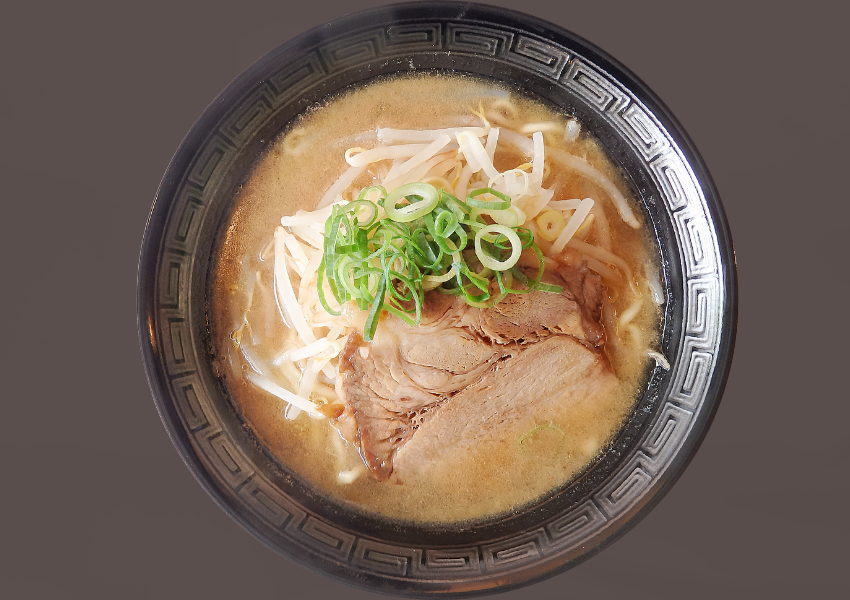
Ramen is another staple dish in Japan that has gained worldwide popularity. Originating from China, this noodle soup has become a favorite among locals and tourists alike. The broth is usually made from pork, chicken or fish-based and comes in different flavors such as miso, shoyu, and tonkotsu. Toppings can vary from sliced pork, boiled eggs, nori, and green onions. Slurping your noodles is not only acceptable but encouraged as it enhances the flavor of the broth.
Where to Find It: You can find ramen shops in every corner of Japan, from small family-run restaurants to chain stores. For a unique experience, head to Ramen Street in Tokyo Station, where you can find eight different ramen shops all in one place.
| Type of Ramen | Description |
|---|---|
| Shoyu | Soy sauce-based broth with curly noodles and toppings such as sliced pork, green onions, and bamboo shoots. |
| Miso | Miso-based broth with curly or straight noodles and toppings such as corn, butter, and bean sprouts. |
| Tonkotsu | Pork bone-based broth with thin, straight noodles and toppings such as chashu (braised pork belly), black fungus, and green onions. |
Tempura
Tempura is a popular dish in Japan that consists of battered and deep-fried seafood, vegetables, or even sweets. The batter is made from flour, water, and eggs, resulting in a light and crispy texture. The most common ingredients used for tempura are shrimp, squid, pumpkin, and eggplant. It’s usually served with a dipping sauce called tentsuyu, which is made from dashi (fish stock), soy sauce, and mirin (sweet rice wine).
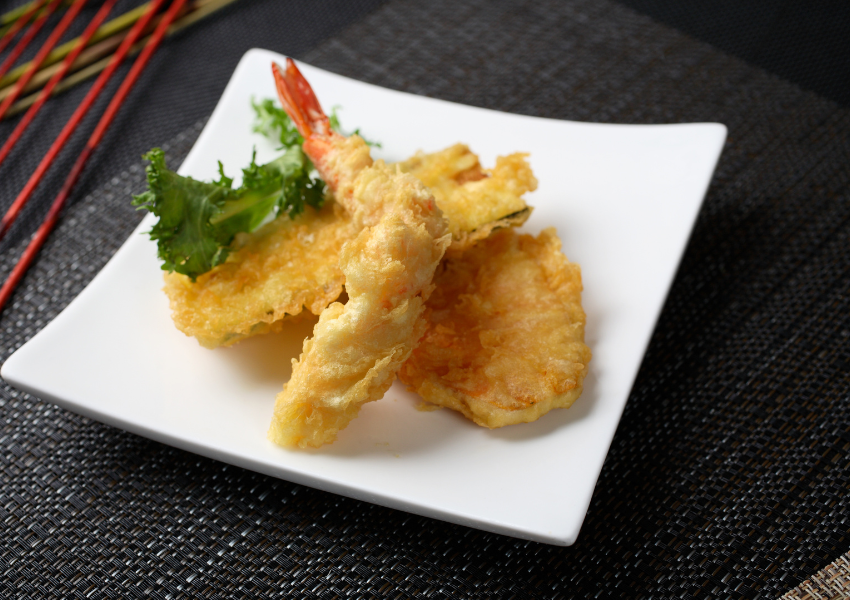
Where to Find It: You can find tempura in many restaurants in Japan, but for a unique experience, head to a tempura specialty restaurant. These restaurants often have a counter where you can watch the chef prepare your tempura right in front of you.
| Type of Tempura | Description |
|---|---|
| Ebi (Shrimp) | A large shrimp coated in batter and deep-fried until golden brown. |
| Kakiage | A mix of various vegetables and seafood, such as shrimp and squid, fried together in a patty-like shape. |
| Kabocha (Pumpkin) | Slices of pumpkin coated in batter and deep-fried until crispy. |
| Anago (Conger Eel) | Thin slices of conger eel coated in batter and deep-fried until crunchy. |
Okonomiyaki
Okonomiyaki is a savory pancake that originated from Osaka but can now be found all over Japan. The name translates to “grilled as you like it,” and that’s exactly what this dish is all about. The base is made from flour, eggs, and shredded cabbage, and then topped with various ingredients such as pork belly, seafood, and vegetables. It’s usually served with okonomiyaki sauce, mayonnaise, and bonito flakes (dried fish flakes).

Where to Find It: You can find okonomiyaki in many restaurants, but for an authentic experience, head to a specialized okonomiyaki restaurant where you can cook your own on a hotplate at your table. such as ”Okonomi-Yum” restaurant in the Asakusa. Here, you have the liberty to customize your okonomiyaki with an array of options, from fresh seafood to a rich selection of vegetables. What’s intriguing is that each table at the restaurant comes equipped with a mini grill for a self-cooking experience. You can enjoy this interactive experience with friends and family, and Mr. Hiroshi (The proprietor) is even willing to offer guidance if you wish! Don’t forget to try okonomiyaki sauce – a traditional recipe that elevates the flavor profile of every dish. Pair it with a locally brewed sake for the complete okonomiyaki experience. Wishing you an enjoyable and delicious evening at the restaurant!
| Type of Okonomiyaki | Description |
|---|---|
| Hiroshima-style | Layers of batter, cabbage, noodles, and various toppings, all cooked together on a hotplate. |
| Kansai-style | A mix of batter and cabbage, topped with various ingredients and cooked on a hotplate. |
| Monjayaki | A runnier version of okonomiyaki, often referred to as “Osaka’s answer to pizza.” There’s no better place to experience it than “Flaming Monja” in the Tsukishima |
Tonkatsu
Tonkatsu is a popular dish in Japan that consists of breaded and deep-fried pork cutlets. The pork is usually coated in panko (Japanese breadcrumbs) and served with tonkatsu sauce, which is a thick and sweet sauce made from fruits and vegetables. It’s often served with shredded cabbage and rice on the side.
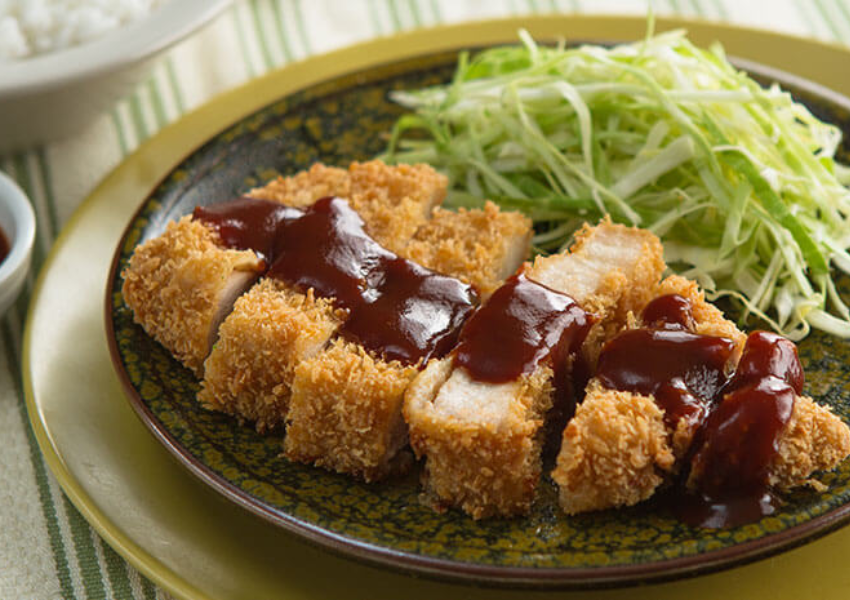
Where to Find It: You can find tonkatsu in many restaurants, but for a unique experience, head to a tonkatsu specialty restaurant. These restaurants often have a counter where you can watch the chef prepare your tonkatsu right in front of you. let me point you to a local gem, “Crispy Cutlet Hideaway” in the Akihabara. Here, from the selection of pork to the precise frying technique, Chef Koji ensures each cutlet is a masterpiece.
| Type of Tonkatsu | Description |
|---|---|
| Hire (Pork Loin) | A lean and tender cut of pork, coated in panko and deep-fried until golden brown. |
| Rosu (Pork Fillet) | A fattier cut of pork, coated in panko and deep-fried until crispy on the outside and juicy on the inside. |
| Katsu Curry | Tonkatsu served with Japanese curry on top. |
Udon – Japanese Food
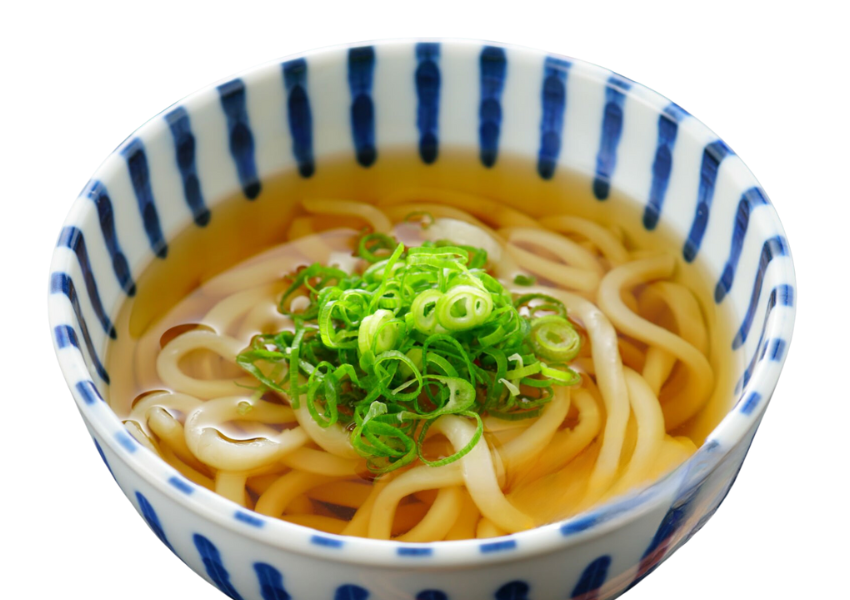
Udon is a type of thick wheat flour noodle that is commonly used in Japanese cuisine. It’s usually served in a hot broth made from dashi, soy sauce, and mirin. Toppings can vary from sliced beef, tempura, and vegetables. Udon noodles are thicker and chewier than ramen noodles, making them perfect for soaking up the flavorful broth.
Where to Find It: You can find udon in many restaurants, but for an authentic experience, head to a specialized udon restaurant. These restaurants often have a variety of toppings to choose from, allowing you to customize your bowl of udon. You absolutely must visit “Noodle Haven” in the heart of Takamatsu, Kagawa’s udon paradise. Don’t miss out on their signature Udon toppings, like locally sourced tempura or the house-made green onions. And for a true Kagawa experience, pair your Udon with a side of Shoyu Tamago, a soy-marinated soft-boiled egg that adds an extra layer of richness to your meal.
| Type of Udon | Description |
|---|---|
| Kitsune Udon | Udon served in a hot broth with sweet fried tofu on top. |
| Tempura Udon | Udon served in a hot broth with tempura on top. |
| Niku Udon | Udon served in a hot broth with thinly sliced beef on top. |
Yakitori
Yakitori is a popular dish in Japan that consists of skewered and grilled chicken. The chicken is usually marinated in a sweet and savory sauce made from soy sauce, sake, and sugar. It’s then grilled over charcoal, resulting in a smoky and flavorful dish. Yakitori is often served as an appetizer or snack, but you can also find it as a main course with rice on the side.
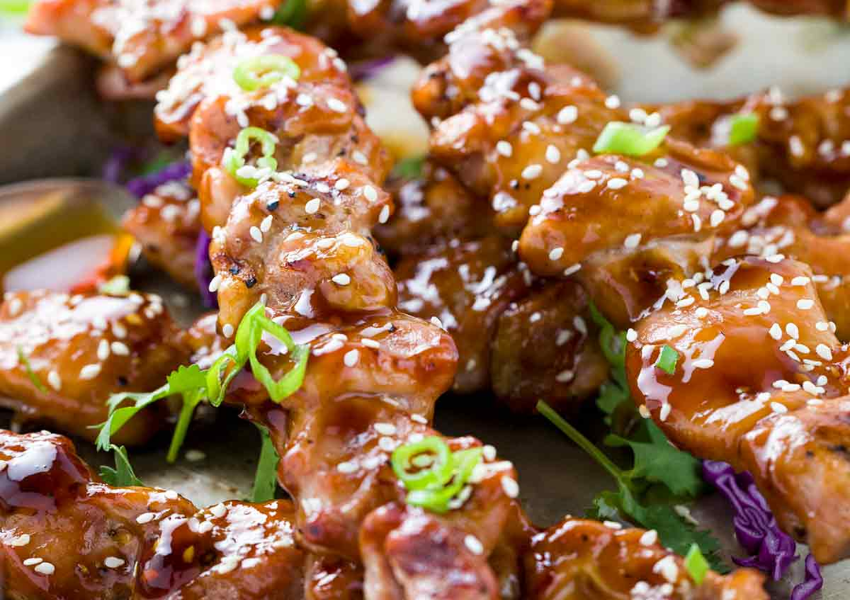
Where to Find It: You can find yakitori in many restaurants, but for a unique experience, head to a yakitori specialty restaurant. These restaurants often have a variety of chicken parts to choose from, such as thigh, breast, and liver. “Skewer Symphony” in the vibrant district of Shinjuku is a must-visit for Yakitori enthusiasts. Here, a harmonious blend of traditional and modern, with the aroma of charcoal grilling filling the air. You’ll find yourself surrounded by locals enjoying the lively atmosphere. Try their special Yakitori sauce, a secret recipe that adds a sweet and savory kick to each skewer. And for a complete experience, pair your Yakitori with a local craft beer or a glass of chilled sake.
| Type of Yakitori | Description |
|---|---|
| Negima | Skewered chicken and leeks, grilled and basted with sauce. |
| Tsukune | Chicken meatballs, grilled and basted with sauce. |
| Momo | Skewered chicken thighs, grilled and basted with sauce. |
Takoyaki
Takoyaki is a popular street food in Japan that originated from Osaka. It consists of small balls of batter filled with diced octopus, tempura scraps, and green onions. The balls are cooked in a special takoyaki pan, which gives them their round shape. They are then topped with takoyaki sauce, mayonnaise, and bonito flakes.
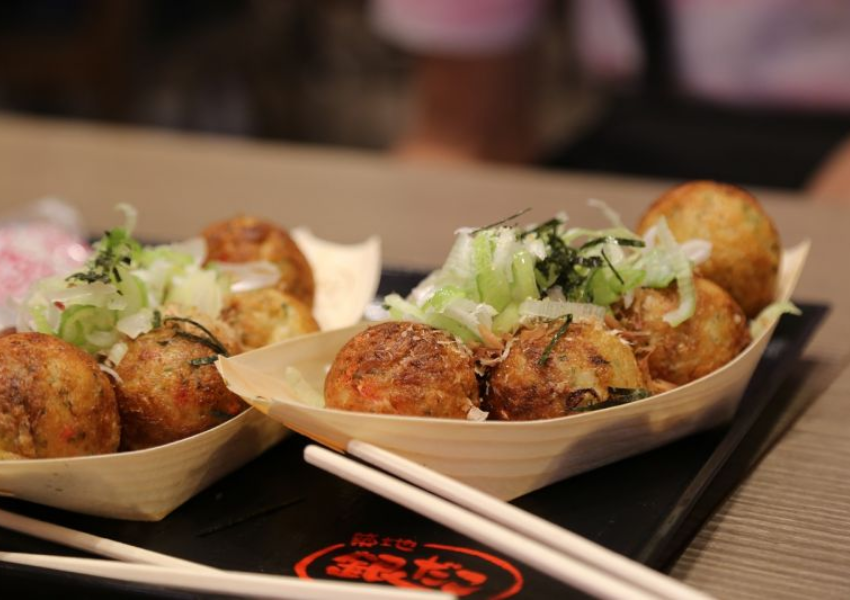
Where to Find It: You can find takoyaki in many street vendors and festivals, but for a unique experience, head to a specialized takoyaki restaurant. Make a beeline for “Octopus Delight” in the lively district of Dotonbori. The menu offers a variety of Takoyaki options, from the classic with bonito flakes and takoyaki sauce to inventive twists like cheese-filled or kimchi-infused Takoyaki. Don’t shy away from trying a bit of everything. An tip: Top off your Takoyaki with a generous sprinkle of aonori (seaweed flakes) and drizzle some extra takoyaki sauce for an extra layer of umami goodness.
| Type of Takoyaki | Description |
|---|---|
| Classic | Takoyaki balls filled with diced octopus, tempura scraps, and green onions. |
| Cheese | Takoyaki balls filled with cheese and other ingredients. |
| Teriyaki | Takoyaki balls topped with teriyaki sauce and other ingredients. |
Shabu-Shabu
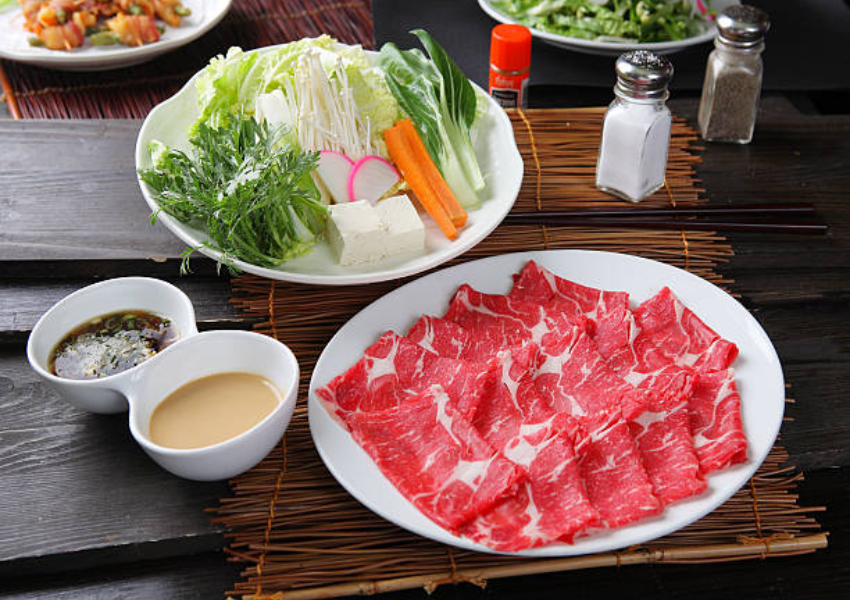
Shabu-shabu is a popular hot pot dish in Japan that consists of thinly sliced meat and vegetables cooked in a pot of boiling water. The name comes from the sound the ingredients make when you swish them around in the pot. The meat is usually dipped in a ponzu (citrus-based) or sesame sauce before eating. Shabu-shabu is not only delicious but also a fun and interactive dining experience.
Where to Find It: You can find shabu-shabu in many restaurants, but for an authentic experience, head to a specialized shabu-shabu restaurant. These restaurants often have individual pots for each person, allowing you to cook your own food at your table. “Broth Bliss” in the upscale district of Ginza is a must-visit for Shabu-shabu enthusiasts. They insist on using only the finest locally sourced ingredients. A tip: Take your time to savor the dipping sauces. Secret concoctions, from ponzu with yuzu zest to a sesame-based delight, add an extra layer of complexity to the Shabu-shabu experience.
| Type of Shabu-Shabu | Description |
|---|---|
| Beef | Thinly sliced beef cooked in a pot of boiling water. |
| Pork | Thinly sliced pork cooked in a pot of boiling water. |
| Seafood | A mix of seafood such as shrimp, squid, and scallops cooked in a pot of boiling water. |
Soba – Japanese Food
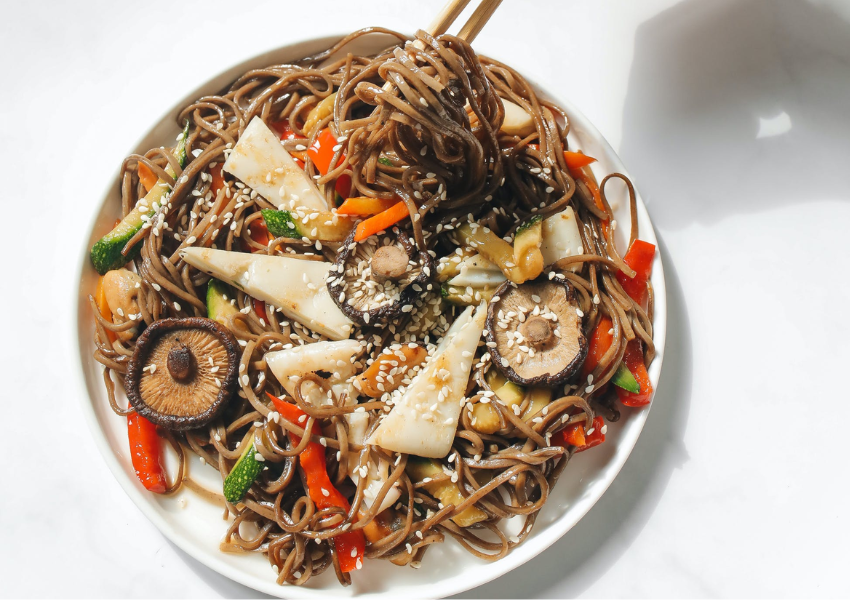
Soba is a type of thin buckwheat noodle that is commonly used in Japanese cuisine. It’s usually served in a hot broth made from dashi, soy sauce, and mirin. Toppings can vary from tempura, green onions, and seaweed. Soba noodles are thinner and nuttier than udon noodles, making them perfect for soups and cold dishes.
Where to Find It:You can find soba in many restaurants, but for an authentic experience, head to a specialized soba restaurant. “Bamboo Serenity” in the historic district of Higashiyama, Kyoto. It stands out among the many Soba establishments. A serene setting with bamboo decor, traditional tatami seating, and the subtle fragrance of freshly prepared Soba wafting through the air. The menu at “Bamboo Serenity” offers a variety of Soba options, from the classic Zaru Soba served chilled with dipping sauce to the heartwarming Kake Soba in a delicate broth. A tip: Pair your Soba with a side of tempura or try the seasonal specials for a delightful exploration of Kyoto’s culinary offerings.
| Type of Soba | Description |
|---|---|
| Zaru Soba | Cold soba noodles served on a bamboo mat with a dipping sauce on the side. |
| Tempura Soba | Soba noodles served in a hot broth with tempura on top. |
| Kitsune Soba | Soba noodles served in a hot broth with sweet fried tofu on top. |
Kaiseki Ryori
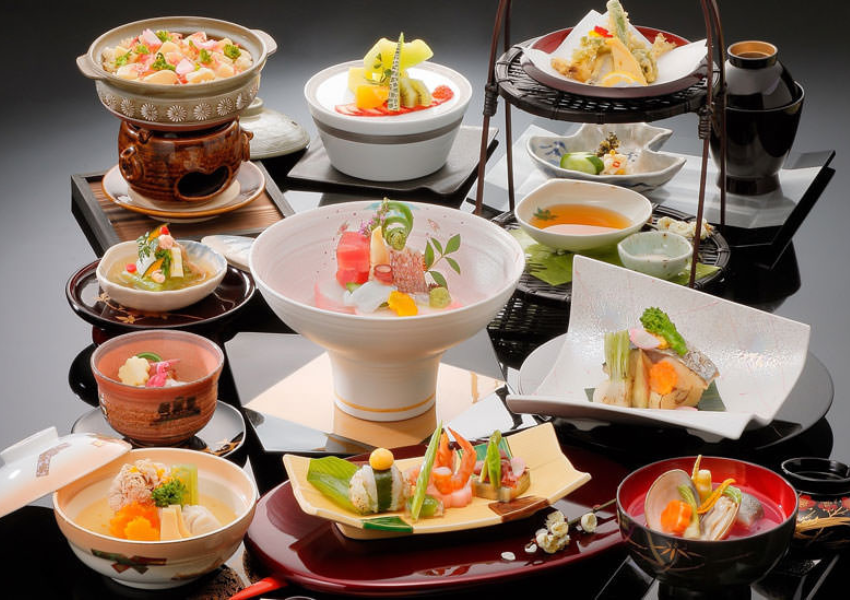
Kaiseki ryori is a traditional multi-course meal that originated from the tea ceremony. It consists of small, beautifully presented dishes that showcase the seasonality and freshness of ingredients. The courses can vary from appetizers, sashimi, grilled dishes, and dessert. Kaiseki ryori is not only a feast for the taste buds but also for the eyes.
Where to Find It: You can find kaiseki ryori in high-end restaurants and ryokans (traditional Japanese inns). For an authentic experience, book a stay at a ryokan and enjoy a kaiseki dinner as part of your stay. “Harmony Gastronomy,” an esteemed haven for Kaiseki Ryori. is a must-visit for aficionados of Kaiseki Ryori. using seasonal and locally sourced ingredients. Tips: Allow Chef Tanaka to guide you through the sake pairing, as each selection complements the nuances of the dishes. Don’t hesitate to inquire about the day’s specials, as Kaiseki is often an ever-evolving showcase of the freshest ingredients.
| Type of Course | Description |
|---|---|
| Sakizuke | An appetizer course, usually consisting of small bites such as sashimi or vegetables. |
| Mukozuke | A sashimi course, showcasing the freshest seafood of the season. |
| Yakimono | A grilled dish, often featuring meat or fish. |
| Shiizakana | A simmered dish, usually made with vegetables and tofu. |
| Hassun | A course that showcases the seasonality of ingredients, often served on a large platter. |
| Futamono | A soup course, often made with seasonal ingredients. |
| Tomewan | A rice dish, often served with pickles and miso soup. |
| Mizumono | A dessert course, usually consisting of fruits or sweets. |
Matcha
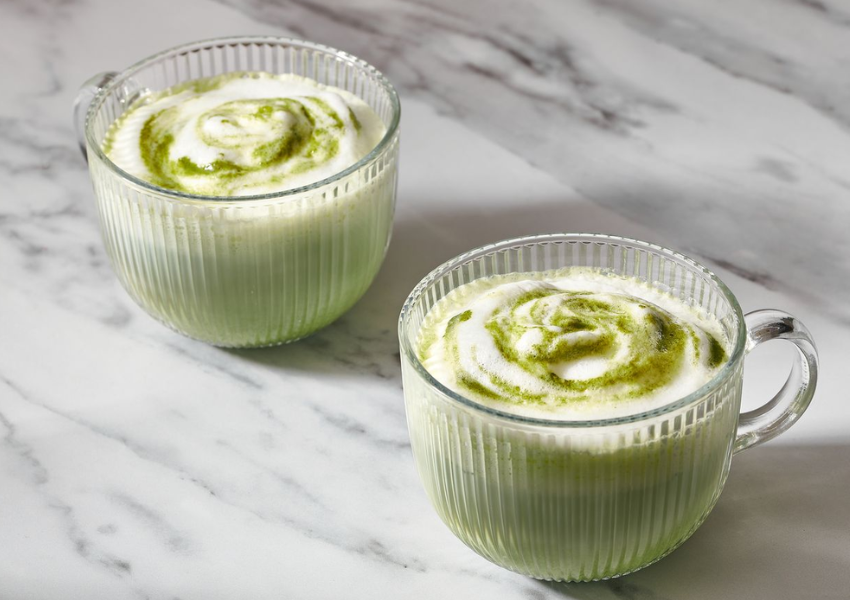
Matcha is a type of finely ground green tea that has become popular all over the world. It’s used in traditional Japanese tea ceremonies and can also be found in various desserts and drinks. Matcha is known for its health benefits and high concentration of antioxidants. It has a slightly bitter taste and is often served with a sweet snack to balance out the flavor.
Where to Find It: You can find matcha in many tea shops, cafes, and even convenience stores. For an authentic experience, head to a traditional tea house and enjoy a cup of matcha with a Japanese sweet. Make your way to “Zen Bliss Tea House,” a hidden oasis tucked away in the verdant hills of this historic matcha haven. The highest-quality Uji matcha leaves, stone-ground to perfection, ensuring a vibrant green hue and a rich, umami-packed flavor profile. From the classic thick matcha served in an elegant bowl to matcha-infused sweets that showcase the versatility of this revered tea. Tips: Opt for the matcha pairing, allowing you to sample different grades of matcha and appreciate the nuanced flavors. Don’t forget to explore the adjacent tea fields, where you can witness the cultivation process and gain a deeper understanding of Uji’s matcha legacy.
| Type of Matcha | Description |
|---|---|
| Usucha | Thin matcha tea, usually served with a sweet snack. |
| Koicha | Thick matcha tea, often used in tea ceremonies and served with a sweet snack. |
| Matcha Latte | A popular drink made with matcha powder, milk, and sweetener. |
Wagyu Beef
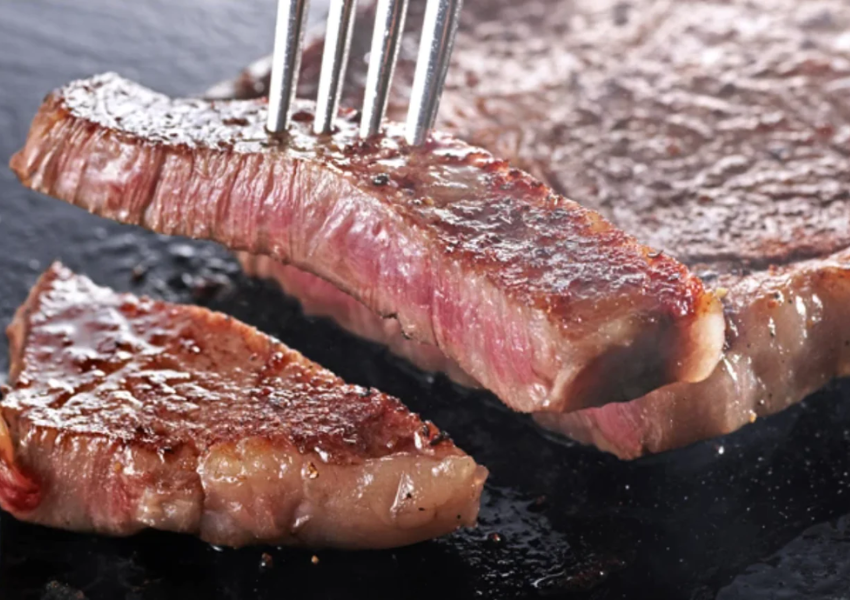
Wagyu beef is a type of high-quality beef that is famous for its marbling and tenderness. The most well-known type of wagyu beef is Kobe beef, which comes from the Tajima strain of Japanese Black cattle raised in Hyogo Prefecture. It’s often served as steak or in hot pot dishes such as shabu-shabu and sukiyaki. Wagyu beef is not only delicious but also a luxurious dining experience.
Where to Find It: You can find wagyu beef in high-end restaurants and specialty shops. For an authentic experience, head to a restaurant that specializes in wagyu beef and try different cuts and cooking methods. Such as “Grill Symphony,” nestled in the shadows of the Mount Rokko. An intimate setting with dim lighting, where the aroma of sizzling beef and the subtle hiss of the grill create a melodic backdrop. The menu at “Grill Symphony” is a carefully curated composition of Wagyu cuts, from the indulgent Ribeye to the melt-in-your-mouth Filet Mignon. Each piece is expertly grilled to your preference, allowing you to savor the full spectrum of flavors that make Kobe beef legendary. Tips: Allow Chef Tanaka to guide you through the various cuts and recommend the perfect accompaniments. Don’t miss out on the house-made dipping sauces, specially crafted to complement the nuanced flavors of Kobe beef.
| Type of Wagyu Beef | Description |
|---|---|
| Sirloin | A lean cut of beef, often served as steak. |
| Ribeye | A fattier cut of beef, often served as steak. |
| Shabu-Shabu | Thinly sliced beef cooked in a pot of boiling water. |
| Sukiyaki | Thinly sliced beef cooked in a pot of broth with vegetables and tofu. |
Onigiri – Japanese Food
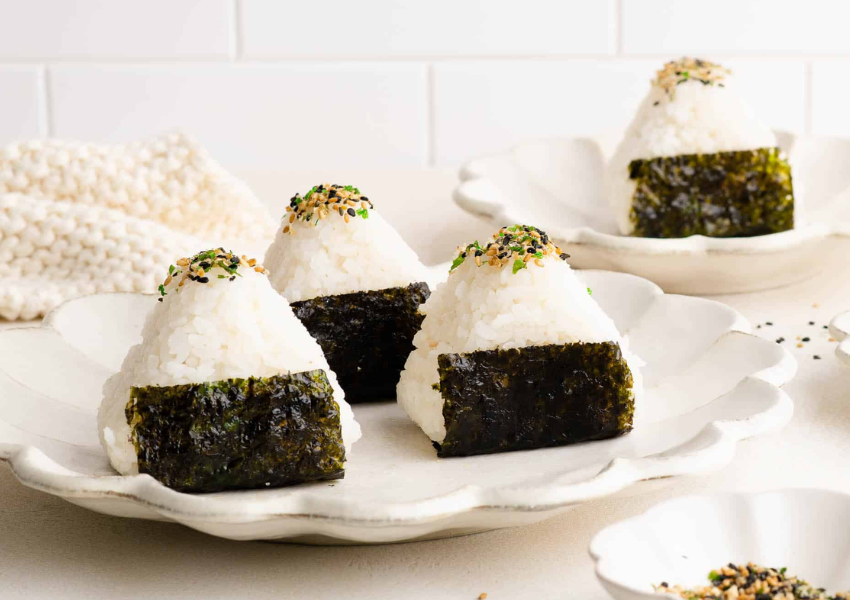
Onigiri, also known as rice balls, are a popular snack in Japan. They consist of cooked rice formed into a triangular or cylindrical shape and often filled with various ingredients such as pickled plum, salmon, or tuna. Onigiri is a convenient and portable snack that can be found in convenience stores, train stations, and even vending machines.
Where to Find It: You can find onigiri in convenience stores, supermarkets, and specialty shops. For an authentic experience, head to a traditional Japanese market and try different types of onigiri from different vendors. some popular local favorites : Nigiya Market located in the Asakusa, Marutoyo situated in Kyoto, Onigiri Bongo in Osaka. Enjoy your delicious meal in Japan!
| Type of Onigiri | Description |
|---|---|
| Salmon | Filled with grilled or smoked salmon. |
| Tuna Mayo | Filled with canned tuna mixed with mayonnaise. |
| Umeboshi | Filled with pickled plum. |
| Katsu | Filled with breaded and fried pork or chicken. |
Taiyaki – Japanese Food
Taiyaki is a popular Japanese snack that consists of a fish-shaped cake filled with sweet red bean paste. It’s often sold at street food stalls and festivals, and can also be found in convenience stores and supermarkets. Taiyaki is a delicious and nostalgic treat for many Japanese people.
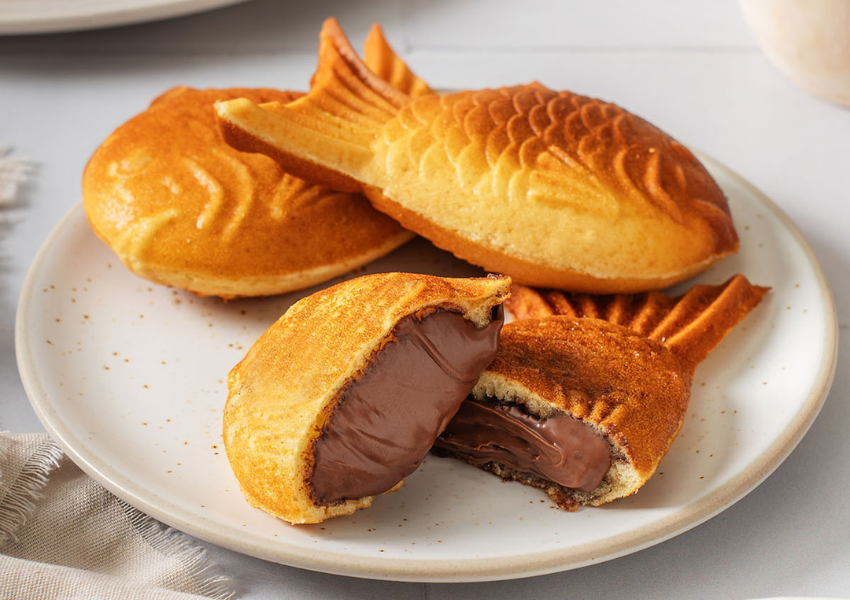
Where to Find It: You can find taiyaki in many street food stalls, festivals, and even convenience stores. For an authentic experience, head to a traditional Japanese market and try different types of taiyaki from different vendors.
| Type of Taiyaki | Description |
|---|---|
| Red Bean | Filled with sweet red bean paste. |
| Custard | Filled with creamy custard. |
| Matcha | Filled with matcha-flavored cream or paste. |
Thanks For Reading!
Japanese cuisine is diverse, delicious, and full of unique flavors. From street food to high-end dining, there are endless options to explore and try. Whether you’re a fan of seafood, meat, or vegetarian dishes, there is something for everyone in Japanese cuisine. So next time you have the chance, be sure to try some of these must-try Japanese foods and experience the rich culture and history behind each dish.

